Research Area A - Publications 2010
13-Dec-2010
Chem. Phys. Chem., online article
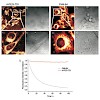
Three new photostable rylene dyes for applications in single molecule studies and membrane labelling have been synthesized and their photophysical properties were characterized. These dyes differ in the number of polyethylene glycol (PEG) chains attached to the core structure which is either a perylene derivate or a terrylene derivate. One perylene and one ...
02-Dec-2010
J. Phys. Chem. A, online article
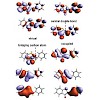
A combined experimental and theoretical investigation of photoinduced Z/E isomerizations is presented. Unsubstituted Hemithioindigo is selected as a representative minimal model to unravel the reaction mechanis in the presence of heteroatoms on an atomic level. Time-resolved spectroscopy reveals multiexponential reaction dynamics on the few picoseconds time ...
16-Nov-2010
Chemical Society Reviews, online article
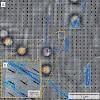
Mesoporous materials have a high potential for a number of different applications in Materials Science such as in molecular sieving, as masks for the formation of nanometre-sized metallic wires, as novel drug-delivery systems or as advanced host systems for catalysis. For many of these applications a thorough understanding of the interaction of guest molecules ...
16-Nov-2010
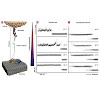
With the help of single molecule force spectroscopy and molecular dynamics simulations, we determine the surface-induced structure of a single engineered spider silk protein. An amyloid like structure is induced in the vicinity of a surface with high surface energy and can be prohibited in the presence of a hydrophobic surface. The derived molecular energy ...
05-Nov-2010
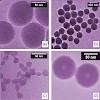
The increasing exposure of humans to nanoscaled particles requires well-defined systems that enable the investigation of the toxicity of nanoparticles on the cellular level. To facilitate this, surface-labeled silica nanoparticles, nanoparticles with a labeled core and a silica shell, and a labeled nanoparticle network—all designed for live-cell imaging—are ...
01-Oct-2010
Current Opinion in Biotechnology, online article
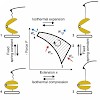
Since we have learned that biological organisms like ourselves are driven by tiny biological molecular motors we try to design and produce artificial molecular motors. However, despite the huge efforts since decades, man-made artificial molecular motors are still far from biological molecular motors or macroscopic motors with regard to performance, especially ...
24-Aug-2010
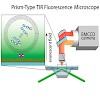
The molecular chaperone heat shock protein 90 (Hsp90) is an important and abundant protein in eukaryotic cells, essential for the activation of a large set of signal transduction and regulatory proteins. During the functional cycle, the Hsp90 dimer performs large conformational rearrangements. The transient N-terminal dimerization of Hsp90 has been extensively ...
02-Aug-2010
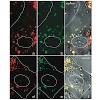
Redox-driven intracellular disulfide-cleavage is a promising strategy to achieve stimuli-responsive and controlled drug release. We synthesized colloidal mesoporous silica (CMS) nanoparticles with ATTO633-labeled cysteine linked to the inner particle core via disulfide-bridges and characterized their cysteine release behavior after internalization into HuH7 cells ...
30-Jul-2010
Journal of Molecular Biology, online article
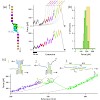
In biological systems, proteins rarely act as isolated monomers. Association to dimers or higher oligomers is a commonly observed phenomenon. As an example, small heat shock proteins form spherical homo-oligomers of mostly 24 subunits, with the dimeric αlpha-crystallin domain as the basic structural unit. The structural hierarchy of this complex is key to its ...
09-Jul-2010
Cell, online article
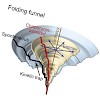
GroEL and GroES form a chaperonin nano-cage for single protein molecules to fold in isolation. The folding properties that render a protein chaperonin dependent are not yet understood. Here, we address this question using a double mutant of the maltosebinding protein DM-MBP as a substrate. Upon spontaneous refolding, DM-MBP populates a kinetically trapped ...
02-Jul-2010
Spectroscopy, online article
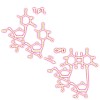
The cyclobutane pyrimidine dimer (CPD) formed between two adjacent thymine bases is the most abundant DNA photolesion induced by UV radiation. The quantum yield of this reaction is on the order of ~1% in DNA. This small quantum yield hampers the study of damage formation in naturally occurring DNA. Investigations with increased accuracy become possible for a ...
01-Jul-2010
Journal of Inorganic Biochemistry, online article
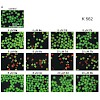
The synthesis, structural characterization and biological activity of eight ortho-quinone(N-aryl)-oximine rhenium(i) complexes are described. The reaction of the halogenido complexes (CO)5ReX (X=Cl (4), Br (5)) with 2-nitroso-N-arylanilines {(C6H3ClNO)NH(C6H4R)} (R = p-Cl, p-Me, o-Cl, H) (3a–d) in tetrahydrofurane (THF) yields the complexes ...
28-Jun-2010
Angewandte Chemie Int. Ed., online article
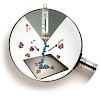
Cosolutes, such as ions, ligands, or small biomolecules, can cause a protein to fold into its biologically functional native form, to associate, to adhere or desorb from an interface, or even change its mechanical properties.[1–5] At the same time, the interaction of cosolutes with macromolecules, such as proteins, lipids and DNA, are themselves modified by ...
01-Jun-2010
Nano Letters, online article
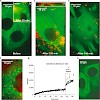
We report on a one-step assembly route where supported lipid bilayers (SLB) are deposited on functionalized colloidal mesoporous silica (CMS) nanoparticles, resulting in a core−shell hybrid system (SLB@CMS). The supported membrane acts as an intact barrier against the escape of encapsulated dye molecules. These stable SLB@CMS particles loaded with the anticancer ...
19-May-2010
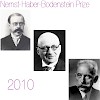
CIPSM researcher Jens Michaelis was awarded with the 2010 Nernst-Haber-Bodenstein Prize. The German Bunsen Society for Physical Chemistry awards the Nernst-Haber-Bodenstein Prize in remembrance of Max Bodenstein, Fritz Haber and Walter Nernst. Congratualtions Jens!
17-May-2010
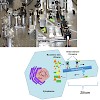
Speedy couriers in the cell. Every single one of our cells contains so-called motor proteins that transport important substances from one location to another. However, very little is known about how exactly these transport processes occur. Biophysicists at CIPSM have now succeeded in explaining fundamental functions of a particularly interesting motor protein. ...
01-May-2010
Optics Communications, online article
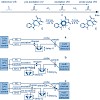
A novel detection scheme for pump–repump–probe spectroscopy is presented, where the use of modulation and referencing allows to record the efficiency of a photochemical reaction as a function of the pump–repump delay in a single measurement. This new technique is applied to investigate the ringopening reaction of an indolylfulgide after pre-excitation. Here the ...
14-Apr-2010
Phys. Chem. Chem. Phys., online article
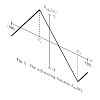
We study a monocyclic peptide called cAPB, whose conformations are light switchable due to the covalent integration of an azobenzene dye. Molecular dynamics (MD) simulations using the CHARMM22 force field and its CMAP extension serve us to sample the two distinct conformational ensembles of cAPB, which belong to the cis and trans isomers of the dye, at room ...
09-Apr-2010
Chemical Physics Letters, online article
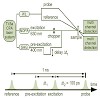
For three indolylfulgides the quantum efficiency of the ring-opening reaction upon pre-excitation is investigated in a multipulse experiment. The quantum efficiency grows by factor of up to 3.4, when the pre-excitation pulse immediately precedes the excitation process. The change in quantum efficiency after pre-excitation is discussed as a function of reaction ...
09-Apr-2010
Molecular Cell, online article
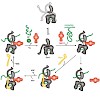
Heat shock proteins 70 (Hsp70) represent a ubiquitous and conserved family of molecular chaperones involved in a plethora of cellular processes. The dynamics of their ATP hydrolysis-driven and cochaperone- regulated conformational cycle are poorly understood. We used fluorescence spectroscopy to analyze, in real time and at single-molecule resolution, the effects ...
29-Mar-2010
Angewandte Chemie International Edition, online article
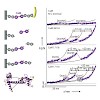
In recent years, single-molecule force spectroscopy has provided a wealth of insights into protein folding and unfolding.1–7 Using mechanical force as a denaturant offers distinct advantages over thermal or chemical denaturation, such as the possibility to locally probe the folding free-energy landscape8 or to actively steer the unfolding pathway of proteins.9 ...
16-Feb-2010
PNAS, online article
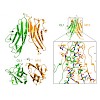
In the sarcomeric M-band, the giant ruler proteins titin and obscurin, its small homologue obscurin-like-1 (obsl1), and the myosin cross-linking protein myomesin form a ternary complex that is crucial for the function of the M-band as a mechanical link. Mutations in the last titin immunoglobulin (Ig) domain M10, which interacts with the N-terminal Ig-domains of ...
02-Feb-2010
PNAS, online article
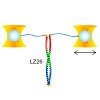
Kinetic bulk and single molecule folding experiments characterize barrier properties but the shape of folding landscapes between barrier top and native state is difficult to access. Here, we directly extract the full free energy landscape of a single molecule of the GCN4 leucine zipper using dual beam optical tweezers. To this end, we use deconvolution force ...
19-Jan-2010
Adv. Mater., online article
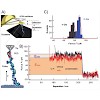
Single-molecule force spectroscopy experiments demonstrate that hydrogenation and oxidation of polycrystalline diamond effectively control molecular adhesion (see figure). Aging changes these properties and originates from the rapid formation of a thin and resistant contamination layer, as well as degradation of the artificial surface termination on longer time ...
13-Jan-2010
Angewandte Chemie, online article
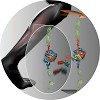
Protein function such as catalytic activity or molecular recognition is tightly coupled to the conformation and dynamics. Since protein conformations may be controlled by forces, diverse active and passive mechanisms have evolved that allow biological systems to respond to mechanical signals. However, forces act in a predetermined direction on these biomolecules ...










